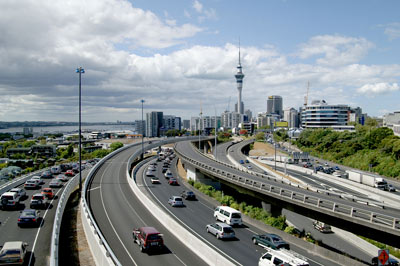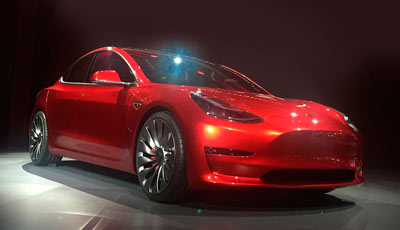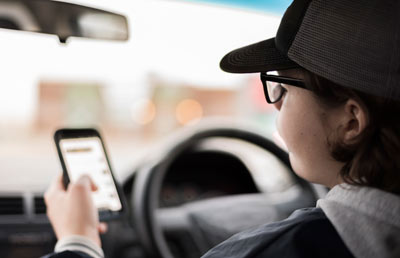|
|
|
|
|
|
|
|
 |
 |
 |
 |
 |
 |
 |
 |
Stuck in traffic?

You are not imagining it — the traffic is getting worse. New data shows nearly 43,000 more cars have been added to Auckland’s roads since this time last year, and vehicle journeys are getting slower around the country.
‘March madness’ — the time of the year when traffic flows peak — was particularly bad this year, as commuters returned to work after the summer holidays and schools and universities were back in session.
New Zealand Transport Agency statistics show the morning commute in the three main cities has become increasingly slow in the past five years, despite investment in roading infrastructure and public transport. Traffic travelling from Auckland’s North Shore to the city in peak rush hour, between 7 and 9am, averaged just 24km/h in November 2015, while the commute from Manukau to Auckland averaged 29.8km/h and Waitakere to Auckland 32.4km/h. But drivers in the capital weren’t much better off, with average speeds between Porirua and the Wellington CBD just 37.9km/h.
Commuters have suffered about a 10km/h drop in average speeds in the five years since 2011 in most areas, although the journey from the North Shore to the city has remained about the same.
However, the NZTA says there is little relief in sight. With high immigration, especially to Auckland, and the construction of new housing on the outskirts of the city, traffic volumes are unlikely to reduce any time soon. But it adds that given the growth, congestion was not as bad as it could be and had actually eased in some places, particularly during the afternoon commute.
Another change traffic planners are seeing is the extension of the traditional “rush hour”, which is now deemed to stretch from 5am to 9 am and from 2pm to 8pm, as commuters attempt to drive outside what they think will be the peak period.
|
 |
 |
 |
 |
 |
 |
 |
 |
|
|
|
|
|
|
|
|
|
|
|
|
|
|
|
 |
 |
 |
 |
 |
 |
 |
 |
Tesla is coming — eventually

Kiwis are able to order the new Tesla 3 electric car — and several individuals and companies have already signed up — but don’t expect to see them on our roads any time soon.
Tesla CEO Elon Musk confirmed that New Zealanders would be able to order the new car, unlike previous Tesla models which could not be bought directly from here. However, production is not scheduled to start until late 2017, and the first cars of the production line are likely to be left-hand drive, to fulfill US market orders.
Excitement about the new car has been high, despite few details of it being released. It has a starting price of US$35,000 (around NZ$50,000), seats five adults and will have a range of around 350 km per charge. Nearly quarter of a million pre-orders were placed in the first few days after the vehicle was revealed.
Among those who have paid the US$1000 to place an order is New Zealand’s Mighty River Power, a LeasePlan client which is aiming to have EVs as 70 per cent of its fleet by 2018.
The Tesla 3 is the first mass-market model offered by the American manufacturer, which has to date produced only high-end sports cars.
Musk has also hinted on social media that there may also be New Zealand-based dealerships in the pipeline. Currently, any Tesla cars imported here have to be serviced in Australia.
|
 |
 |
 |
 |
 |
 |
 |
 |
|
|
|
 |
 |
 |
 |
 |
 |
 |
 |
EVs shine at New York Auto Show

A new hard-topped Mazda MX-5, a new-look Subaru Impreza and a plug-in hybrid Toyota Prius were among the offerings on show at the prestigious New York International Auto Show in late March. The New York show is the longest-running motor show in the United States and is attended by huge numbers of US car fans and buyers.
Electric vehicles (EVs) were a major drawcard, with General Motors displaying its Chevrolet Bolt electric vehicle, a mass-market, long-range EV which goes into production later this year. The new Prius Prime was also on display, said to be the company’s most efficient hybrid yet, with a claimed fuel efficiency figure of 2.0 litres per 100km.
The new Mazda MX-5 was named World Car of the Year at the show, beating the new Mercedes GLC SUV and Audi A4. It also took the award for Best Car Design, beating the Jaguar XE and Mazda’s own CX-3.
The two-seater car, known as a Miata in the US, is a ‘retractable fastback’, meaning it has a hard, four-part roof which folds away into the boot at the touch of a button.
|
 |
 |
 |
 |
 |
 |
 |
 |
|
|
|
|
|
 |
 |
 |
 |
 |
 |
 |
 |
Look away from the phone…

We all know we shouldn’t text and drive, but is it any better to text and walk? A New Jersey state politician has proposed new legislation which would see pedestrians distracted by their phones fined up to $50, imprisoned for 15 days or both — the same penalty as for jaywalking. Half of the fine would be allocated to safety education about the dangers of walking and texting, said assemblywoman Pamela Lampitt.
‘Distracted pedestrians, like distracted drivers, present a potential danger to themselves and drivers on the road,’ Lampitt was reported as saying. ‘An individual crossing the road distracted by their smartphone presents just as much danger to motorists as someone jaywalking and should be held, at minimum, to the same penalty.’
However, in New Zealand the Ministry of Transport has no plans to extend restrictions on the use of mobile devices to pedestrians. However, the NZTA has recently launched a new campaign against distracted driving, aimed at young drivers and their cell phone addictions. The ‘Hello’ campaign aims to challenge younger people’s behaviour around constant cell phone usage in a humorous way, reminding them that it’s not acceptable while driving.
|
 |
 |
 |
 |
 |
 |
 |
 |
|
|
|
|
|
|
|
|
|
|
|
|
|